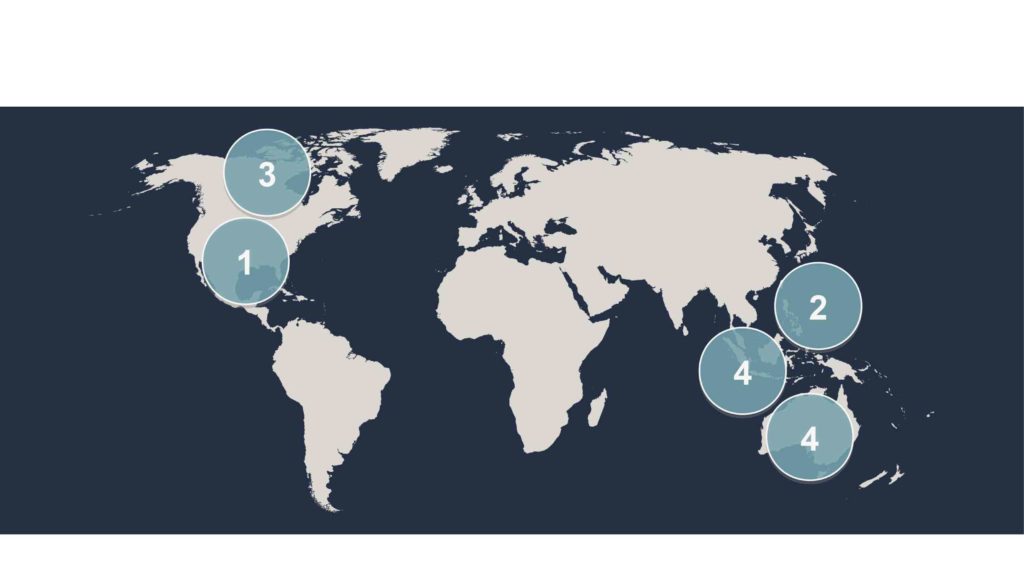There will be more “ultrarich” people in the Philippines by 2022, growing at a rate considered the second highest in the world.
And we are not just talking about those who consider themselves rich just because they have a few cars and got a business or two.
We’re talking about people with at least $50 million (P2.6 billion) in net assets.
In a country of more than 100 million people, less than 1 percent can call themselves ultra high net worth individuals (UHNWI).
In 2017, only 310 people belonged to that elite group in the Philippines, according to the latest Wealth Report by global consultancy firm Knight Frank.
But that number of ultrarich people in the Philippines —most of whom are homegrown locals with some coming from mixed races—will nearly double in 2022, the second highest growth rate behind that of China, the report noted.
The report, now on its 12th edition, was released for the first time in Manila in a press briefing on Thursday.
According to Rick Santos, who heads Knight Frank’s local partner firm, Santos Knight Frank, the report provides data and insights on issues that “matter to most of the world’s wealthiest.”
Among its findings, it saw that there will be an 84-percent increase in the number of the ultrarich in the next few years in the Philippines.
“If we look at absolute numbers, what does that actually mean? The Asia effect. Asia is going to contribute 38 percent of global UHNWI over the next five years,” said Nicholas Holt, Asia-Pacific head of research for Knight Frank.
Of this figure, more than 9,300 new UHNWIs, or 47 percent, are accounted for by China.
The report noted that China would see a 104-percent growth in new UHNWIs from 2017 to 2022, the highest in the world.

Commercial Sectors attracting THE interest OF Filipino UHNWIs
HEALTHCARE, LOGISTICS/WAREHOUSING, INFRASTRUCTURE, OFFICES, RETAIL
SOURCE: THE WEALTH REPORT ATTITUDE SURVEY
Following are the Philippines, India and Malaysia.
According to the Wealth Report 2018, there will be 570 UHNWIs in 2022 in the Philippines, an 84-percent increase from the 310 UHNWIs in 2017.
This is a larger increase when compared to the previous half decade.
From 2012 to 2016, that number only grew 24 percent to 300 people, from 250 individuals in 2012.
Rick Santos, in a statement, said the growth in the number of UHNWI was driven mainly by a bullish real estate industry and strong macroeconomic fundamentals.
He said it “will be fueled by the influx of Chinese investments into the Philippines through the Belt and Road Initiative (BRI).”
First announced in 2013, the initiative calls for a wide, ambitious, and influential network of land and sea links that will connect China with Southeast Asia, Central Asia, the Middle East, Europe and Africa.
However, during the press briefing, Holt said the forecast growth was not directly related to the BRI.
“The forecast growth is not a direct correlation with the BRI. But BRI would be one of the things that would be supporting growth, perhaps even encourage stronger growth across the BRI markets,” he clarified.
Since President Duterte took office in 2016, the Philippines has followed a different approach in its relationship with China.
While taking a softer stance against China in asserting the country’s rights over a territorial dispute over the West Philippine Sea, the Duterte administration has been wooing Chinese economic benefits in the form of investments and trade ties.
One of the clear signs of an improving relationship was when the Chinese government invited the Philippines to attend the Belt and Road Forum in May last year.
In the forum, Mr. Duterte joined other world leaders as the Chinese government looked for more support behind its ambitious belt and road initiative.


